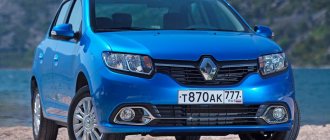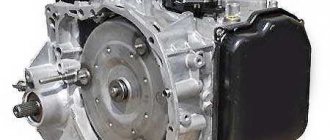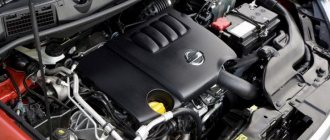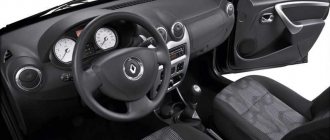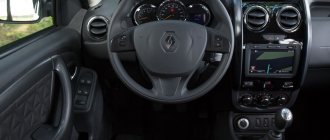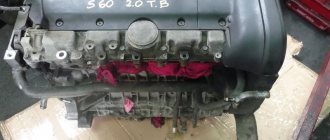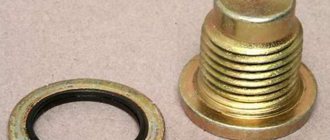The appearance of the 1st generation Renault Megane dates back to 1995 . It was then, in September, that it was first presented to the public at the Frankfurt Motor Show. The new product replaced the Renault 19 on the assembly line. Although the car could be called new only nominally. All the technical stuff was taken from its predecessor. The engineers simply put a new body on it and slightly modified the suspension. The model name Renault Megane 1 was born seven years earlier. This was the name of the concept car presented in 1988.
Exterior and interior
The first to appear was the Renault Megane 1 hatchback. His appearance became a continuation of the company's new corporate style. Designed by Patrick Le Queman. The exterior turned out to be extraordinary. The angular body is a thing of the past. The emphasis is on streamlined elliptical lines. This is clearly noticeable when viewed from the side - the car has an oval profile.
An interesting solution was the design of the front part of Megan 1. The edge of the hood goes down, forming something like a bird's beak. Such a protrusion covers the radiator grille in the center, visually dividing it into two parts. Such a design solution is not entirely Le Queman’s idea. He spotted it on a Renault 16, originally from the 60s. In the cabin, ellipses and ovals also rule the roost.
The interior of Renault Megane 1st generation is non-trivial and interesting. It harmoniously echoes the geometric shapes of the body. Unusual steering wheel, oval lines of the central panel. Renault Megane I was positioned as a budget car, but at the same time you can find leather seat trim and a good set of electronics. There is a music system with a CD changer, central locking, electric windows, and door locks automatically lock while driving.
Salon Renault Megan 1 (Link to photo source)
A year after the presentation of the hatchback, buyers were presented with the Renault Megane 1 Classic sedan. It differed only in the design of the stern and modified rear lights. Renault Megane 1 station wagon appeared in 1999 with a restyling of the model.
Renault Megan 1 station wagon
Renault Megane 1st generation was produced at the company's French and Spanish factories, as well as in Turkey and in some other countries. For the Russian market, the car was assembled in Moscow at a French-owned facility. Together with it, side by side, the Renault 19 rolled off the assembly line. True, this production did not last long. Soon, due to the default that broke out in Russia, the project had to be curtailed.
Interior
The interior of Renault Megane 3 is assembled with high quality, but the materials used are delicate and sensitive to rough contacts. Owners complain about the rapid wear of plastic and leather on the steering wheel after 80,000-100,000 km. Sometimes the squeaking of panels is annoying.
Electrical problems do occur (for example, with the chip card reader), but much less frequently than in the previous generation model. Sometimes the climate control panel (backlight and buttons) malfunctions, or the heater fan resistor fails. The air conditioner may fail due to a leaky condenser (7-8 thousand rubles).
Problems with the operation of the rear lights arise due to poor contacts. The malfunction can also be caused by damage to the wiring in the protective corrugation between the trunk lid and the body. In this case, the trunk door lock also stops functioning normally.
Reliability and weaknesses
When choosing a used Renault Megane 1, remember that the car is already more than 20 years old, and a lot can break. But repairs and maintenance are inexpensive. And the Megane 1 itself can be bought for a small amount. But finding a living specimen will not be easy.
Body and interior
Over 25 years, enough reviews have accumulated about Renault Megane 1st generation. Moreover, there are not so many negative ones. Russian drivers in those days were not yet spoiled by the variety on the market, but now a car is forgiven a lot, making allowances for its age.
The main disadvantage of the body is commonplace for a 20-year-old car - corrosion. Moreover, the early copies rusted faster. After restyling in 1999, elements susceptible to rust became galvanized. Then Renault Megane 1999 received an additional guarantee against through corrosion for 8 years. But the warranty has long expired, and time, water and reagents continue to inevitably take their toll on the body.
In the Renault Megane's interior, the problem is also commonplace for its age - the electrics may malfunction.
Salon Renault Megane 1
Moreover, this applies not only to the radio or central locking, but also to engine control systems. This is due to old wiring and oxidized terminals.
Engines and gearboxes
To say that the 1st generation Renault Megane has a wide range of power units is to say nothing. You can easily get confused in them. But most often in our market there are 4-cylinder petrol engines with a volume of 1.4 and 1.6 liters. Like all engines from the last century, they can easily take care of 400 thousand km. But minor and medium repairs may be needed earlier. Judging by the reviews of the owners, the weak point here is the thermostat housing gasket. It periodically causes puddles of antifreeze under Renault Megane 1st generation. In addition, piston rings sometimes get stuck. Otherwise, there are no global systematic problems if during operation you take into account the tendency of both engines to overheat and refuel only with high-quality gasoline.
Diesels are less common under the hood of the Renault Megane 2001. There are minimal problems with them, and fuel consumption is easy on the wallet. But it’s better to be scrupulous when choosing a gas station, otherwise you will inevitably spend money on cleaning the injectors and replacing the pump.
The main and, probably, the only disease of these diesel engines is failure of the thermostat, when, after reaching operating temperature, the idle speed does not decrease.
There were two transmissions to choose from: a five-speed manual and a 4-position automatic. With mechanics, the rocker seal occasionally leaks and over time the rod bushings made of plastic wear out. With proper operation, the manual transmission lasts a long time and without serious breakdowns. But little is known about the machine gun. It is still possible to find a live 1st generation Megane with an automatic transmission, but the choice will be extremely small.
Transmission
The 114-horsepower version of the 1.6-liter naturally aspirated petrol engine was equipped with a 6-speed manual transmission TL4. Unlike the 5-speed JH3 (for 106 hp), the TL4 offers more precise operation of the gear selection mechanism. True, it is of little use on the highway. Sixth gear has almost the same gear ratio as fifth. As a result, the engine develops quite high speeds at high speed. TL4 also went to the 1.2 and 1.4 TCe turbo engines.
Alternatively, pair with 1.6/106 hp. a 4-speed automatic DP2/DP0, based on the AL4, was offered. Contrary to fears, it usually does not come to a thorough repair of the box. And the shocks during shifts, as usual, disappear after changing the oil and two solenoid valves (1,600 rubles each). Sometimes it was necessary to wash the hydraulic unit.
1.6/114 hp and the 2-liter modification were equipped exclusively with a continuously variable transmission CVT (FK0 / JF011E). The CVT does not add driving pleasure, and after 200,000 km it may require repairs.
The 1.9 dCi was mated to a new 6-speed ND4 gearbox.
The 150 hp 2.0 dCi could alternatively be combined with the AJ0 automatic transmission from Jatco. Other versions - with a return of 160 hp. – came with a manual transmission RK4.
The RK4 also relied on a 2-liter gasoline turbo engine. The three-shaft 6-speed manual transmission is very reliable. It was developed to replace the capricious PK6 from Laguna II with 2.0dCi (M9R).
The clutch of manual transmissions runs over 200-250 thousand km. The cost of a new set is 8-12 thousand rubles. In diesel versions, in parallel, you usually have to update the dual-mass flywheel for 20-25 thousand rubles.
In 2010, an automated dual-clutch EDC transmission was offered. In service practice, it was designated DC4 or Getrag 6DCT250. The robot's clutch life is about 200-250 thousand km. A new kit will cost 60-80 thousand rubles.
Restyling Renault Megane 1
The 1999 restyling not only refreshed the appearance of the Renault Megane I, but also additionally brought a station wagon body to buyers. The extended version of the car goes by different names, depending on the market in which it was sold: Grand Tour, Sport Tourer, Estate or simply Brake.
All modifications received a modernized appearance. The radiator grille, bumpers and headlights have changed. Renault Megane 1 station wagon differs from the sedan and hatchback only in the stern. It has different, smaller rear lights and a large tailgate with almost zero tilt. This made it possible to increase the capacity of the hold, surpassing its competitors in this indicator.
Technically, the station wagon is no different from its counterparts in other bodies. There are the same engines, gearboxes and similar suspension.
Dimensions Megane station wagon
Renault Megane 1 station wagon
Dimensional characteristics of Renault Megane 1 station wagon:
- length, width and height – 4440x1700x1420 mm;
- wheelbase – 2580 mm;
- ground clearance - 175 mm;
- weight – 1160 kg;
- trunk volume – 485/1600 l;
- Fuel tank volume – 60 l.
Characteristics of the 1.8 petrol engine
After restyling, another 1.8 F4P engine appeared. This is a 4-cylinder petrol engine with a 16-valve cylinder head. This internal combustion engine was equipped with a 5-speed manual transmission. Renault Megane 1 station wagon with these units has the following characteristics:
RENAULT F4P ENGINE (Link to photo source)
- power – 107 hp;
- torque – 148 Nm;
- compression ratio - no data;
- acceleration to 100 – 9.5 s;
- Max. speed – 197 km/h;
- fuel consumption in the city, on the highway and mixed - 10.2/6.2/7.7 liters.
New life for your ex: test drive Renault Megane IV
Runaway beauty Megan
Our class of mid-size hatches has “gone into the sunset”, and without any romance.
The fans scattered in all directions - the poorer audience, not because of a good life, moved to the B-class, which had also successfully grown, while the wealthier ones preferred crossovers. They may be smaller in size, “grayer” in appearance, poorer finished, but they are tall and “jeep-like”, for which Russians are ready to endure any hardships. The top 25 most popular models still include (in last place) the Kia Cee'd, give or take the Hyundai i30, Ford Focus and Volkswagen Golf, without which, it seems, the world would simply collapse. Rather, the Mazda3 and Peugeot 308 hatches can be called extras. The majority have left us completely. Toyota Auris, Opel Astra, Honda Civic, Citroen C4, Nissan Tiida... Does anyone else remember these once glorious names? What about Renault Megane?
The latter, to be honest, in its third generation looked a little pale, somehow Korean or something. Looking at the smooth contours of the most boring body, out of respect for the brand, I had to drive away the offensive word “remnant” and look for something to catch my eye on. Oh yes, the three-door version was okay, with interesting rear optics. The giant diamond on the “face” that appeared with the restyling improved the situation a little, but cosmetics couldn’t help.
Neither the old platform from the Megane II nor the set of sluggish aspirated engines, reaching the climax of phlegmaticity in combination with a CVT, added to the car’s attractiveness. Among the advantages, I remember a good, strong suspension, as if from Logan, and a simple, but well-finished interior without any deliberate cheapness. When Megan left the Russian market, no one cried into their pillow. “She died like that.” And then…
Everything happened according to the scenario of a typical soap opera in the life of 25-year-olds. You lived like this with a girl who once captivated you with her waterfall of brown hair and her boisterous laugh, but then she stopped taking care of herself, became bored, settled down in household chores, and also periodically bothered you with petty quarrels. You disagree with her - well, you don’t get along in character, it happens. And in general, life is short - you have to try everything.
And then, a year or two later, you accidentally meet her on the street. Boom! - It was you who fainted. Your ex drew the right conclusions from your failed romance. One glance shows that she got a promotion, recently flew to Milan for a sale, goes to the gym at least 3 times a week, and even her facial expression has changed from rustic to condescendingly bitchy. And you are still the same - shaggy, in not very new jeans and sneakers from the hypermarket. You exchange short greetings and meaningless phrases as you go, and then you curse yourself for blindness and drink all weekend, because she is already engaged, is moving to Europe for permanent residence, and you will never be together.
Renault also made conclusions. It is unlikely that the attitude of the Russian consumer towards Megane III played any role here; there is no need to delude yourself. It was simply impossible to continue selling such boring cars, and a design explosion was needed. It definitely worked out. What distinguishes our audience from the lyrical hero of the tragic mini-story is that no one seems to hold a grudge against Russia, and we still have a ghostly chance to meet in ecstasy with the beautiful Megan. If not in a long-term relationship with a loan and insurance, then at least as part of a holiday romance, renting it in Europe.
Ah, this look of eyes, “let down” by either sabers or boomerangs, rhyming with the inserts on the bumper! Oh, this food with long red LED stripes, like scratches of passion on the back! Ah, these chiseled sides with rigidly defined stampings and turn signals that look like pebbles in the desert, half blown with sand in the wind... You want to stroke this car, walk around it and click your tongue. All the days while I had it for a test drive, I walked to the door of the house from the parking lot not just looking around, but exclusively backwards.
Let Citroen and its brother Peugeot not be offended by me, but it was Renault that returned the former glory to French design. As they say, made design great again, like President Trump. It seems that images of French cars are again born over a glass of aromatic Malbec, and not over a cardboard with spicy noodles.
But okay, after all, we don’t have a literary portal, but a car portal. Let's stop these streams of sublimation and turn to harsh and impartial analytics. What do the dry numbers and facts say? Have we been presented with stale toffee in a bitter Swiss wrapper? No, it's probably not toffee inside. But not bitter Swiss either.
Dry millimeters
Quite expectedly, Megan was built on a relatively new modular platform of the Renault-Nissan alliance - Common Module Family, CMF. Our customers know it from the Nissan Qashqai and X-Trail crossovers. For the manufacturer, this means maximum unification and reduced cost of production with plenty of room for a riot of design imagination. What about the consumer?
In general, not much. The car, according to the latest trends, visually “fell” to the ground and became a little larger. The increase in length compared to its predecessor was 64 mm, 28 mm of which went to the wheelbase. Combined with the increased width, this all adds to the spaciousness in the cabin in all dimensions. One pity is that the ground clearance has become 145 mm instead of the previous 160.
The beauty Megan has lost a little in practicality, but the European buyer is more interested in the reduced drag coefficient and the resulting reduction in fuel consumption.
Look here
Do you like the instrument cluster in your car? Ever wanted to swap the speedometer and tachometer? Or maybe your preferences change depending on your mood? Then you definitely need a top-end Renault Megane, which comes with a little useful but fun “customize the dashboard” toy. Twenty options! Five combinations, four color schemes, and I still can’t decide. Not because everyone is good, but because the speedometer and tachometer cannot be shown at the same time...
An 8.7-inch touchscreen monitor is located vertically on the center console, through which you can control everything, everything, everything - we have already seen it on the Espace minivan . Again, there are a lot of opportunities for individualization: we put only the most necessary things on the starting desktop, and we can also change the size of the icons. There are almost no questions about the sensor - the response to touches is almost instantaneous, and there is also the two-finger zoom function familiar to smartphones. You can find fault with the graphics, especially the maps, but I won’t.
Armchairs with a combined finish are deep and soft, quite in the French style. I won’t talk about electric adjustment drives, but a massager on a fairly average C-class car is worth mentioning! And by the way, it’s a pretty decent massager. I didn’t notice a fundamental difference with that of the Mercedes E-Class , for example.
1 / 6
2 / 6
3 / 6
4 / 6
5 / 6
6 / 6
The rear seats are spacious, although the declared 28 mm increase in the wheelbase is not immediately noticeable. The sofa looks like it is designed for two, but three people can fit in, and it will even be quite bearable to sit for a while. The trunk is not a record, 384 liters, but when have you seen a record trunk in a hatch?
1 / 6
2 / 6
3 / 6
4 / 6
5 / 6
6 / 6
Not for the sake of numbers
Test drives / Single Terrible enfant, eggplant: test drive Renault Espace Initiale Paris Do not try to translate “enfant terrible” literally! This is not a “scary child” at all, but a character who does not hamper himself with generally accepted rules and, willy-nilly, can create an environment... 35318 3 20 04/27/2016
I would like to perform the same appassionato in this section as in the first part about design! Sing the avalanche of torque of the new engines, marvel at how accurately the car writes the trajectory with the new multi-link rear steering or, what the hell, the 4Control fully controlled chassis, like on the same Espace... But no. All this can only appear on the Megane RS.
The CMF platform, although relatively new, in combination with front-wheel drive, requires an elastic beam at the rear. In general, Megan’s ride is traditionally soft and collected, perfectly suited for bad roads (of which there are many, including in Eastern and Southern Europe ). Maybe a little tougher than the previous Megane, but the philosophy is the same. In high-speed corners you'll feel nothing more than a delicate outward arc, and even the steering effort remains fairly light. Oh yes, the stabilization systems on the new Megane cannot be switched off.
Motors are also not capable of inspiring children's delight. The base gasoline engine is the familiar 1.6 naturally aspirated 115 horsepower straight from the old Megane and a bunch of other Alliance cars, including the new Ladas. For those who like something “warmer”, there are a couple of engines from Qashqai: a 1.2 turbocharged petrol with 130 horsepower and a rather boring in character, but quiet and relatively new 1.6 turbodiesel of the same power.
Transmission:
Robot, 6 stages
And on the test copy there is, believe it or not, the “Honored Artist of the Diesel Genre” - an eight-valve 1.5 dCi K9K series with a power of 110 hp. With.! A direct descendant of the same one who “made brains” with his cracking Delphi fuel equipment back in the days of the Megane II. True, then the patient was cured of childhood illnesses and appeared, in particular, under the hood of a Renault Duster.
The old engine is unequally combined with a relatively fresh EDC robotic gearbox. There is no need to be scared, there are no “blunts” or shocks when switching, because there are two clutches, just like on a DSG or Powershift.
How all this can move in space can be assumed in advance, and then you can be convinced that you are right. Due to the presence of six gears with well-chosen gear ratios, the car confidently cuts through traffic in urban modes at speeds up to 80 and rpm up to 2,500. Here we have both a good torque of 250 Newtons and acceptable acoustic comfort - Renault clearly did not skimp on soundproofing mats ! I won’t say that the noise level is premium, but it is very decent by the standards of the class.
I don’t even want to go on the fast track – it’s just frustrating. Acceleration closer to a hundred fades (passport data - 11 seconds to 100), and after 120 the diesel engine is openly screaming. Well, there’s also no thrill in forcing some turns, as has already been said. Another amusing ergonomic incident is that for some reason the cruise control button is located not on the steering wheel, but on the dashboard... Why? Mystery.
Renault Megane IV Claimed fuel consumption per 100 km
| Urban cycle, l | Suburban cycle, l | Mixed cycle, l |
| 4 | 3,5 | 3,7 |
At the same time, I sympathize with the unenviable fate of a young and progressive transmission, which clearly does not fulfill its potential with its grandfather K9K. After all, it can not only shift quickly, but also, like the thoroughbred PDK robot from Porsche, maintain “torque” speed after a quick leap forward, expecting that a new one will follow. Well, where do we go, granddaughter? We would like to go into the senile comfort zone, one and a half thousand revolutions, and quietly chug along to our destination. Wow, what a misalliance!
Well, okay, since we have a nursing home under the hood, let's go quietly. Let's reconfigure our dashboard into relaxing green tones, lean back... Now there is harmony.
What cannot be taken away from our unsweetened couple is asceticism in everyday life. According to the on-board computer, consumption is easily within the range of 6-6.5 liters of fuel per 100 km. And if you instill Nordic habits in yourself and let the engine stall at every traffic light, then in eco mode this figure easily drops to 4.8-5 liters. And this is in a frosty city with a stove and air conditioning!
What's the result?
Let's boil it all down to the bottom line. Megan has become beautiful - you can’t take your eyes off him. There will probably be haters, but where there is love, there is hate, everything is logical. It's better than dull indifference. A new era has finally arrived in the cabin: multimedia toys, decent graphics, and a non-irritating stupid sensor. And eternal values like quality of materials and comfortable fit have not gone away.
Renault Megane IV
Brief technical specifications
Dimensions, mm (L / W / H): 4,632 / 1,814 / 1,443 Engine: 1.5 l, 110 l. With. Transmission: robot, 6 steps Drive: front wheels Ground clearance, mm: 145 Curb weight, kg: 1,341
The technical content clearly hints at the target audience: fans of emotions, adrenaline and other things still need to go to the Germans. Reno is a territory of comfort. Excellent suspension for overcoming uneven surfaces, very high-quality “Shumka” - considering that in Russia the roads are mostly straight and broken - just what we need.
Maximum speed, km/h:
200
With all this, as can be seen from the transmission, the design has good growth potential. Put here a larger and fresher engine with 200-plus horsepower, all-wheel drive, a multi-link, and 4Control - and we can still compete with the Focus ST, Octavia RS and other GTi...
It’s a pity that all this is not about the Russian buyer. We lost too much in foreign exchange earnings and became carried away with the localization of production, closing the way to everything imported. The beautiful Megan cannot be our life partner. However, hoping for the best is a stubborn thing.
Survey
Would you buy the Renault Megane IV if it were sold in Russia?
Your voice
Total votes:
Reviews
Click to enlarge

